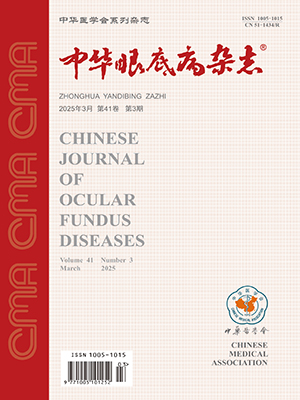Objective To evaluate the prognosis of retinopathy of prematurity (ROP) following the screening and treatment guidelines of the Chinese Ministry of Public Health. Methods From December 2003 to December 2010, 1379 premature infants diagnosed with ROP were followed by binocular indirect ophthalmoscopy or fundus photography using RetcamⅡ digital camera. For the stage 1 ROP, eyes were followed every 2 weeks until the ROP regressed. For the stage 2 ROP or pre-threshold disease, eyes were followed weekly. If the ROP decreased, eyes were followed every two weeks until the ROP regressed completely. For the stage 3 ROP or acute progressive ROP (AP-ROP), eyes were followed 2-3 times weekly. If the ROP progressed to threshold or type 1 pre-threshold disease, laser therapy was performed within 72 hours. After laser treatment, eyes were followed every 1 -2 weeks. Laser or cryotherapy was conducted when the ROP progressed after first treatment. Scleral buckle and vitrectomy with closed triple incisions was conducted when the ROP progressed to stage 4 and stage 5. The period the infants were followed ranged from 6 months to 2 years (average 152.3 days). ResultsA total of 2758 eyes of 1379 infants were diagnosed with ROP. The gestational age range was 26 . 35 weeks (average 30.6 weeks) and the birth weight of 800-2200 grams (average 1424.6 grams). Four hundred eyes (14.5%) of 206 infants with threshold or type 1 pre-threshold disease were given laser treatment. Three hundred and forty-five eyes (86.2%) completely regressed, and 55 eyes (13.8%) progressed to unfavorable structural outcomes. All 2358 eyes that did not reach threshold or type 1 prethreshold disease regressed completely. The total regression rate of our study was 980%. The incidence of unfavorable structural outcomes was 2.0% including stage 4 in 32 eyes (1.2%) and stage 5 in 13 eyes (0.5%). The retina reattatched in all 6 eyes treated with scleral buckle but macular traction remained at the optic disc. In the 39 eyes treated using vitrectomy with or without lensectomy, the retina reattached completely in 17 eyes at stage 4a. In 15 eyes at stage 4b, the retina reattached completely in 10 and remained detached in 5 eyes. In the 13 eyes at stage 5, the retina reattached completely in 4, and reattached mostly in 1 eye. Conclusion The incidence of severe ROP leading to unfavorable structural outcomes can be effectively reduced by screening and timely treatment.
Citation: 倪颖勤,黄欣,单海冬,俞笳,薛康,常青,赵培泉. Screening and treatment of retinopathy of prematurity:analysis of a 7-year clinical study. Chinese Journal of Ocular Fundus Diseases, 2012, 28(1): 45-48. doi: Copy
Copyright © the editorial department of Chinese Journal of Ocular Fundus Diseases of West China Medical Publisher. All rights reserved




